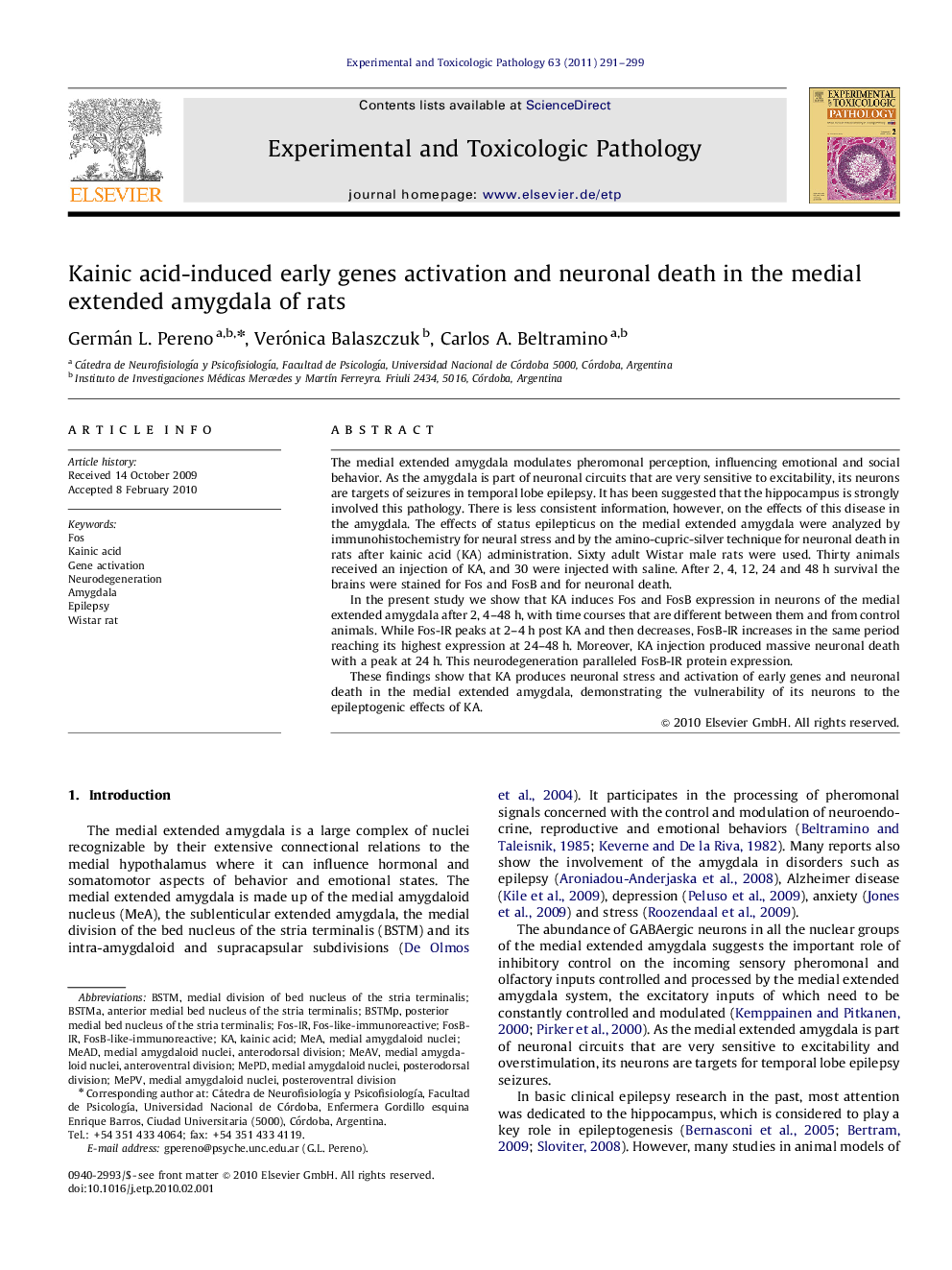| Article ID | Journal | Published Year | Pages | File Type |
|---|---|---|---|---|
| 2499532 | Experimental and Toxicologic Pathology | 2011 | 9 Pages |
The medial extended amygdala modulates pheromonal perception, influencing emotional and social behavior. As the amygdala is part of neuronal circuits that are very sensitive to excitability, its neurons are targets of seizures in temporal lobe epilepsy. It has been suggested that the hippocampus is strongly involved this pathology. There is less consistent information, however, on the effects of this disease in the amygdala. The effects of status epilepticus on the medial extended amygdala were analyzed by immunohistochemistry for neural stress and by the amino-cupric-silver technique for neuronal death in rats after kainic acid (KA) administration. Sixty adult Wistar male rats were used. Thirty animals received an injection of KA, and 30 were injected with saline. After 2, 4, 12, 24 and 48 h survival the brains were stained for Fos and FosB and for neuronal death.In the present study we show that KA induces Fos and FosB expression in neurons of the medial extended amygdala after 2, 4–48 h, with time courses that are different between them and from control animals. While Fos-IR peaks at 2–4 h post KA and then decreases, FosB-IR increases in the same period reaching its highest expression at 24–48 h. Moreover, KA injection produced massive neuronal death with a peak at 24 h. This neurodegeneration paralleled FosB-IR protein expression.These findings show that KA produces neuronal stress and activation of early genes and neuronal death in the medial extended amygdala, demonstrating the vulnerability of its neurons to the epileptogenic effects of KA.
